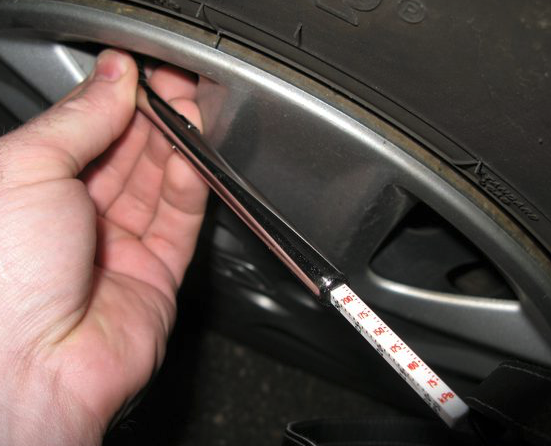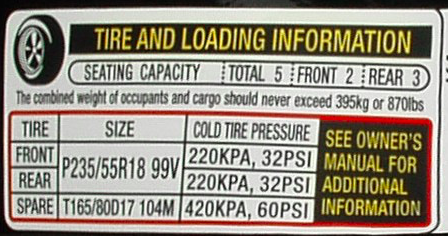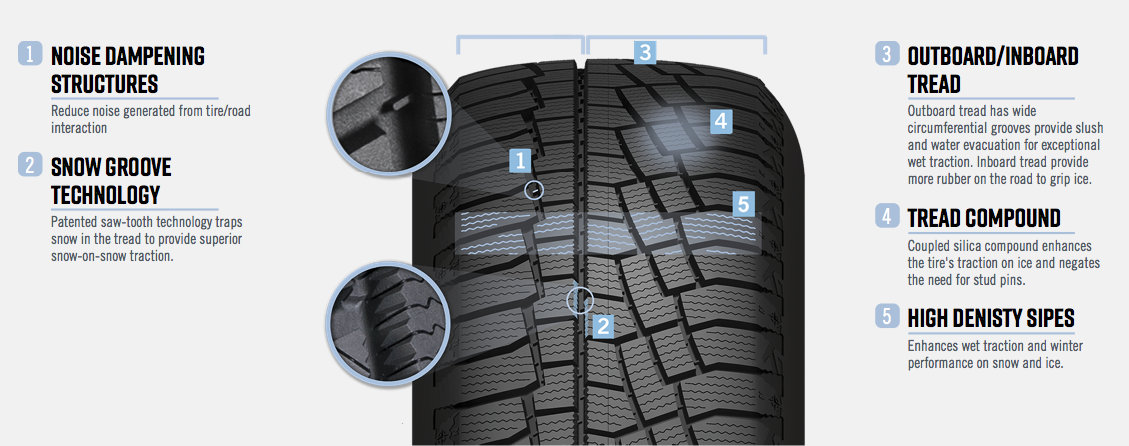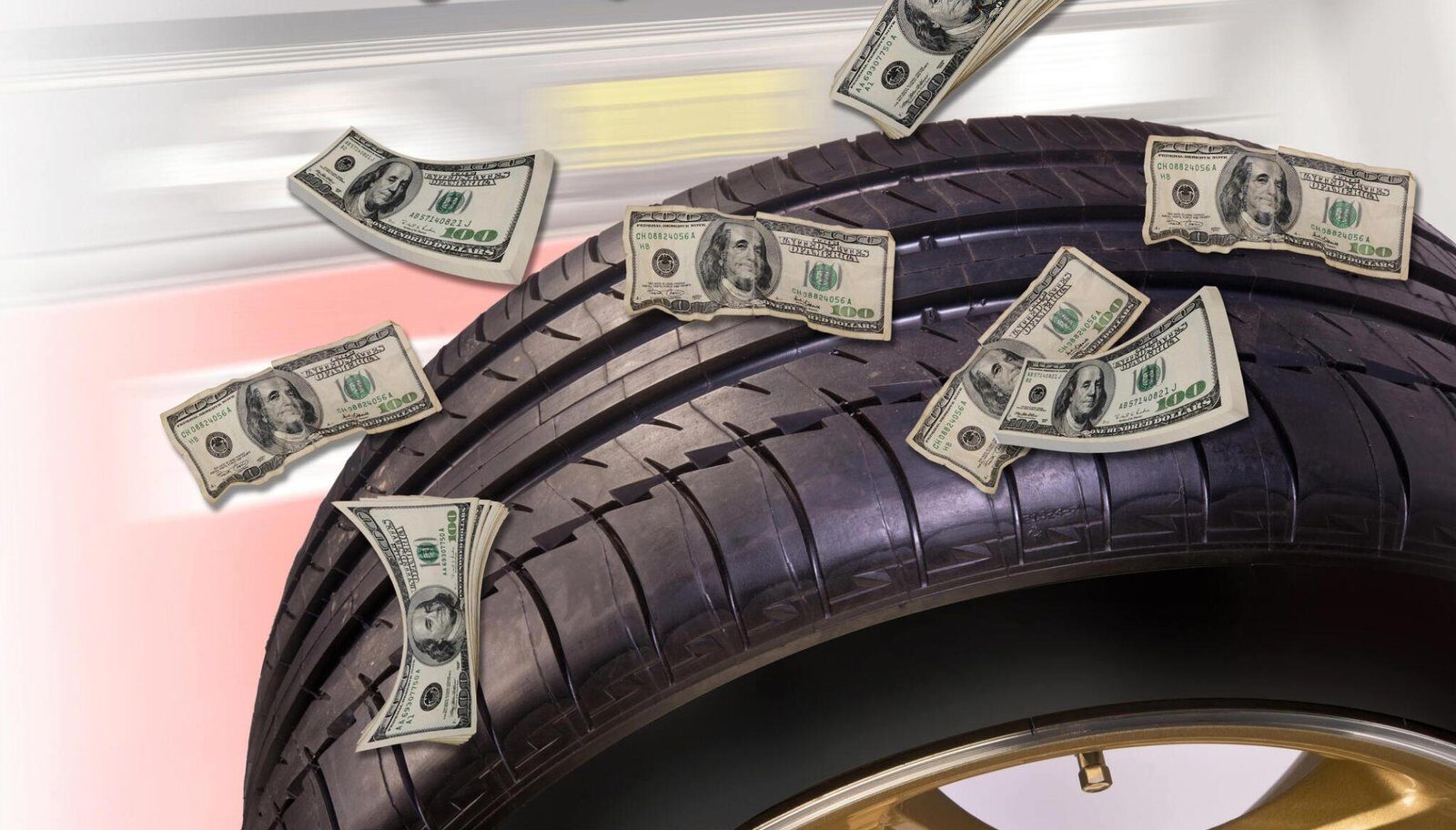Last Updated on April 21, 2024
Why Regular Tire Tread Checks are Vital for Your Safety
The holiday season is in full swing, which can mean a busy schedule of activities, parties, and get-togethers with friends and loved ones. The overwhelming number of events and commitments usually means more travel by car, often in adverse weather conditions. So, while we may have less time, this is no time to forget about routine maintenance on our trusted vehicles. Tire pressure checks are simple preventive maintenance that can help ensure your safe commute and travel.
It only takes a few minutes to do tire pressure checks; anyone can do it using a standard air pressure gauge. Tire pressure checks can be the difference between arriving safely or being stranded on a busy highway, potentially missing out on valued time with family and friends.
Understanding the Impact of Tire Tread Depth on Safety
Regular tire tread checks are a fundamental aspect of vehicle maintenance that should never be overlooked. The condition of your tires directly impacts your safety on the road, making these routine inspections not just a best practice but a critical necessity.
In the following discussion, we’ll delve into why regular tire tread checks are paramount for your safety while driving. From traction and handling to avoiding hydroplaning and blowouts, each aspect underscores the importance of this simple yet crucial maintenance task. So, let’s explore why these checks are not just advisable but vital for your well-being on the road.

- Traction and Grip: Adequate tire tread depth is essential for maintaining traction and grip on the road. When your tires have proper tread depth, they can effectively grip the road surface, even in wet or slippery conditions. This helps prevent your vehicle from skidding or sliding, reducing the risk of accidents.
- Handling and Control: Tires with good tread provide better handling and control of your vehicle. You can steer, brake, and maneuver more confidently, especially in emergencies. This control is crucial for avoiding obstacles or hazards on the road.
- Reduced Hydroplaning: Treaded tires can channel water away from the tire’s contact patch, reducing the risk of hydroplaning. Hydroplaning occurs when your tires lose contact with the road due to a layer of water, making it difficult to control your vehicle. Proper tire tread helps prevent this dangerous situation.
- Shorter Stopping Distance: Tires with adequate tread depth have a shorter stopping distance. This means your vehicle can halt faster when you apply the brakes, reducing the chances of rear-end collisions.
- Enhanced Vehicle Stability: Tires with good tread provide stability to your vehicle. This stability is especially crucial when taking corners or navigating winding roads. It helps maintain your vehicle’s balance and prevents skidding.
- Preventing Blowouts: Insufficient tread depth can lead to tire blowouts, which can be catastrophic, especially at high speeds. Regular tread checks can help identify worn tires that need replacement, reducing the risk of blowouts.
- Fuel Efficiency: Well-maintained tires with proper tread depth can improve your vehicle’s fuel efficiency. Tires with low treads tend to increase rolling resistance, making your engine work harder and consuming more fuel.
Regular tire tread checks are a simple yet effective way to ensure your driving safety. It’s essential to monitor your tire’s tread depth, replace them when they wear out, and keep your vehicle equipped with reliable tires. Prioritizing tire safety is a proactive step toward preventing accidents and enjoying worry-free journeys on the road.
What You Need for Tire Pressure Checks

Tire pressure checks can be done at a local service station or in your driveway or garage with a standard air pressure gauge like the one shown. Digital gauges are equally accurate and easy to use. According to dmv.org, the most accurate readings are done when tires are cold and haven’t been driven in a few hours.

You must also know your vehicle’s recommended air pressure and tire. This can be found on most vehicles’ placards inside the driver’s side door post. Alternatively, you can find it in the vehicle owner’s manual.
Step-by-step Instructions to do Tire Pressure Checks:
- Remove the cap from the valve stem. The valve stem is on the inside of the wheel itself, and the plastic cap can be twisted off by hand.
- Insert the tire pressure gauge into the valve stem. Press down firmly to stop air escaping.
- Check the reading on the gauge once you have a firm seal. Look for the scale in PSI, which stands for pounds per square inch.
- Compare the reading on the gauge to the recommended PSI on the vehicle placard.
- If the reading exceeds the recommendation, air must be released from the tire. Do this by lightly pushing in the center of the valve stem for a few seconds. Most gauges have a pin that allows you to depress the center stop. This allows air to escape and brings the PSI closer to the recommendation. You can bleed air out in 2 or 3-second increments, using the gauge each time to measure against the target PSI.
- If the tire pressure is below the recommendation, you must add air. If you do this at home and do not have an air compressor, this is quickly done at your nearest service station. Most tire stores will be happy to double-check your tire pressure and add air as needed at no charge.
- Replace the valve caps after you have adjusted the tire pressure. They protect the valve stem from dirt and road grime that can cause leaks.
While you are doing the tire pressure checks, it is a good idea to take a few extra seconds visually to inspect each tire for excessive tread wear, foreign objects stuck in the tire tread, deep cuts, or large bumps on the side of the tire. Any of these conditions could mean your tires need to be replaced soon.
Conclusion
Prioritizing your safety on the road starts with a simple yet essential task: the tire tread check. Regularly inspecting your tire tread depth ensures proper traction, grip, and vehicle stability, reducing the risk of accidents. Make it a habit to check your tire treads, and you’ll enjoy worry-free journeys.
Ready to ensure your tire safety?
Visit Tire Easy today and explore our wide range of high-quality tires. Invest in safety and make every journey a secure and enjoyable one!
Great Prices on a Huge Assortment of Tires
If you do find yourself in the position of needing new tires, then Tires-easy.com has you covered. With the largest selection of new tires online, Tires-easy.com offers hundreds of tire brands, a wide range of prices, easy ordering, and fast shipping. Call (855) 978-6789 or visit Tires-easy.com today to ensure you have safe tires for the holiday season.
FAQs
Why is a tire tread check essential for road safety?
A tire tread check is vital for road safety because it helps ensure proper traction and grip. Adequate tire tread depth is crucial, especially during wet or slippery conditions, as it allows water to be channeled away from the tire’s contact patch, reducing the risk of hydroplaning. It also helps maintain control and stability while driving, making it an essential aspect of vehicle safety.
How often should I perform a tire tread check?
You should perform a tire tread check at least once a month before embarking on long journeys. Also, check your tires for unusual wear patterns, vibrations, or handling issues. Regular inspections help you identify potential tire problems early and ensure your safety on the road.
How do I perform a tire tread check?
Performing a tire tread check is easy. You can use the “penny test.” Insert a penny into the tire’s tread with Lincoln’s head facing down. If you can see the top of Lincoln’s head, it’s time to replace the tire. Alternatively, use a tread depth gauge for a more precise measurement. Make sure to check all four tires, including the spare.
Can I drive with insufficient tire tread depth?
Driving with insufficient tire tread depth is not recommended. It can lead to reduced traction, longer braking distances, and increased risks of accidents, especially in adverse weather conditions. Replace your tires promptly if worn beyond the safe tread depth limit.










